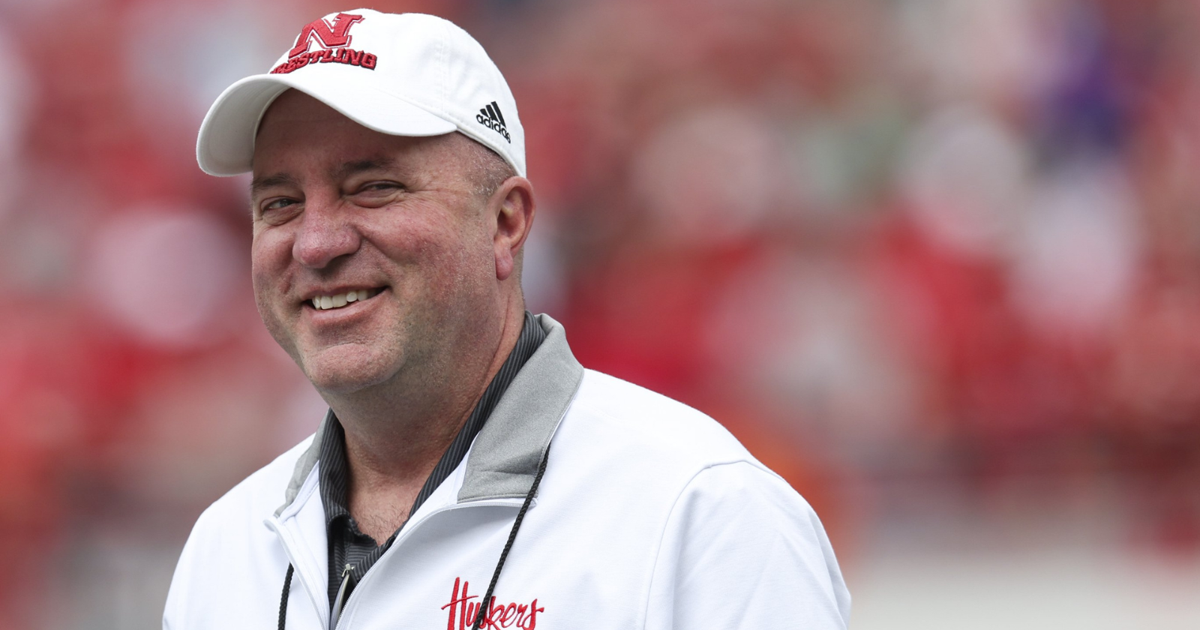
SAM MCKEWON
Omaha World-Herald
INDIANAPOLIS — Troy Dannen stands still for a moment amid the bustle of Big Ten media days.
While football coaches at nearby podiums offer thoughts on sharing millions of TV revenue dollars with student-athletes, Dannen ponders a question only Nebraska’s athletic director might.
Which Husker volleyball position should get the biggest piece of the revenue-sharing pie?
“There’s never been a delineation between, ‘What is an outside hitter worth?’ vs. a setter vs. a libero,” Dannen said.
The terms of a long-anticipated NCAA court settlement have arrived, and by 2025, schools will have up to $23 million each to give to student-athletes. With five national titles, five-star recruits and the ability to sell out a football stadium, Dannen said, Nebraska volleyball will get a healthy investment.
People are also reading…
But coach John Cook, football’s Matt Rhule, Dannen and other Husker leaders, will have decisions to make. Beyond athletes’ ability to earn money off their name, image, likeness — an NCAA right since 2021 — many Huskers, some still teenagers, will soon get direct compensation from their schools.
Is setter Bergen Reilly compensated like the football quarterback? Does each player on the roster get the same base payout? Incentive bonuses for performances?
“Coaches have work to do in this, too, deciding where they need to invest their money and how,” Dannen said. “There’s a lot of thought that goes into it. Everybody becomes a general manager.”
Dannen plans a summit soon with Husker coaches.
No one has all the answers, especially as it relates to how the House settlement — reached in late July and named for Arizona State swimmer Grant House, one of the plaintiffs involved in suing the NCAA — addresses Title IX, the landmark equality law that shaped schools and athletics for more than 50 years.
No matter. Athletic departments form multiple plans anyway.
“You work in the now,” Minnesota coach P.J. Fleck said at media days last month. He talks about it every day, sometimes even at dinner. “You have a vision of what you want to do, and you play a lot of ‘ifs.’ Then you build a structure around the ‘ifs,’ and it’s a pretty wide net.”
It’s a big change coming to college sports. Given the tumultuous past five years in the industry, that’s saying something. And the latest shift could pit schools against booster-driven groups, known as collectives, for who pays athletes the most.
Pandemic tips dominoes
Dannen thinks COVID-19 shifted the mood around student-athlete compensation.
Antitrust lawsuits against the NCAA abounded before the pandemic. Advocates pushed for overhauling the NCAA model — built on scholarships for tuition, books and housing — before sports shut down for months in spring and summer 2020.
On June 15, 2020 — as the U.S. surged past 2 million COVID cases — House and fellow plaintiff Sedona Prince, a women’s college basketball player, filed a lawsuit against the NCAA and five major college conferences. The suit aimed to allow college athletes to profit off their name, image and likeness while being able to share — as the pros do— in the revenue generated by TV deals with those conferences.
The landscape drastically changed in June 2021, when the U.S. Supreme Court voted in a 9-0 decision to allow schools to start paying student-athletes stipends for educational benchmarks. On July 1, 2021, the NCAA released broad guidance for student-athletes to make money off their name, image and likeness through autographs, endorsement deals and other off-field activities.
In the months thereafter, a free market flood of collectives — groups of donors, wealthy and modest — formed.
Acting as agents, collectives began to assist student-athletes in pursuing traditional NIL contracts, such as appearing in ads for local businesses. But collectives also pooled resources together to make deals that were closer to pay-for-play.
Nebraska had one of the nation’s first collectives — what eventually became 1890 Nebraska — and Dannen, still A.D. at Tulane then, was happy to see Green Wave boosters quickly start one, as well.
Tulane won the Cotton Bowl after the 2022 season. Dannen said he doesn’t think it was a coincidence.
He immediately embraced 1890 upon his hire last March. Now fans who want choice season tickets in Memorial Stadium get points for donating money to 1890. Last Saturday, the collective helped host an open practice at Memorial Stadium, where fans paid $25 to the collective to watch a workout with the 2024 team — quarterback Dylan Raiola included.
Rhule, Raiola’s coach, made a splash last November, when he surmised a good transfer quarterback costs “$1 million, $1.5, $2 million.” Precision passers weren’t fetching that price to do voiceovers for Fortune 500 companies, either.
How much did Raiola, or any Husker star, get through 1890-facilitated deals?
The figure is not public. Across the country, almost none are disclosed. That can make the collective bidding war a bit like liar’s poker.
Rhule joked at Big Ten media days that his “$1 million” comment got guff from opposing coaches, who told him their quarterbacks wanted more money after they heard Rhule’s quote.
Rhule prefers to be transparent — and competitive.
“I hear all the time, people tell me ‘I don’t really believe in NIL,’” Rhule said. “What do you mean, you don’t believe in it? You might not agree with it, but it is what it is. I would love it if all of us had the same amount, because then you could see who could recruit and coach.
“If you’re asking me to recruit against a team that’s got twice as much money to give players as I do, then I’m not going to win very often.”
Collectives, in theory, can raise and pay unlimited amounts of money for high-level athletes, and Rhule said Nebraska has a “long way to go” to become a top-funded collective.
In total dollars, Dannen said, “I wouldn’t say it’s in anyone’s top 10, top 15” of collectives.
“But it’s hard to tell what’s real or what’s not real,” Dannen said.
The House settlement has more concrete details — and controversy, too.
House dividing
The NCAA and House plaintiffs hammered out a billion-dollar settlement approved Sept. 5 in U.S. District Court. The deal keeps the NCAA intact for 10 years while shifting billions from institutions directly to current and former student-athletes.
* The settlement comes with the ability to offer many more full-ride scholarships — in football, it’s 105 instead of 85 — while restricting the size of rosters.
“You don’t have to scholarship the (extra) 20,” Dannen said. “After 85, a lot of our players are getting NIL deals that essential amount to scholarship.”
* Collectives could still arrange big-ticket NIL deals for student-athletes, but the settlement requires any third-party NIL deals above $600 be reported and reviewed by an “enforcement agency” for validity.
This is perhaps the most controversial part of the settlement because it attempts to shift pay-for-play away from booster-driven collectives toward revenue-sharing with the institution. The settlement allows schools to bring the collectives “in-house” as marketing agencies while adhering to the $600 rule.
Boosters paying $1 million of their own money to a starting quarterback would come under more scrutiny.
* Student-athletes who competed in college since 2016 will receive back pay over the next 10 years from of a $2.78 billion pool.
Your favorite Husker or Creighton Bluejay — be it NU quarterback Tommy Armstrong or CU center Ryan Kalkbrenner — will get a portion of that money. So will current quarterback Heinrich Haarberg, who joined the Huskers in 2021.
“I didn’t know anything about the back pay,” Haarberg said Aug. 2, learning from a reporter he would receive payment. “But that is interesting.”
* Starting in 2025, institutions can start doling out up to $23 million the first year — and a bit more, pursuant to a settlement formula, each subsequent year of the deal — to student-athletes.
Nebraska, with more than $200 million in revenue for fiscal year 2022-23, intends to share its full allotment each year. Other schools with less revenue may struggle to afford it.
Football’s piece of the pie?
The thornier matter for NU and other schools is how much of that $23 million goes to the football team.
Coaches in the SEC, a rival conference of the Big Ten, said at their media days event that they’d want to allot at least $15 million — or 65% — in Year 1. That may seem like a lot, but football generates about 92% of the revenue, Dannen said, that go into athletic departments. Football also has the most athletes to pay.
Complicating the question is Title IX, the 1972 law that over time and tireless efforts by women’s sports advocates, brought growing gender equality of opportunity and institutional care to athletic departments. A Husker men’s and women’s basketball player have the same benefits from their scholarships, their own gyms in the same training complex and play at Pinnacle Bank Arena.
Should they get the same money from the House settlement? Should football players get more than volleyball players? Does Title IX govern revenue-sharing payments the way it does scholarships?
Prince — a TCU basketball player and one of the key plaintiffs in the House lawsuit — told ESPN that revenue should be shared by sport, not evenly split between men’s and women’s programs.
“Title IX has closed the gap so much,” she said. “It’s a necessity in college sports and college life in general. But the facts are the facts. College football makes a massive amount of money compared to the rest of the sports.”
The ultimate decision may not be up to Prince or the settlement.
Likely, schools will initially divvy up money according to sport, not gender, favoring football. If a female athlete files suit against her institution for unequal payments, at least one federal judge and perhaps several will have to interpret how Title IX applies to the House settlement.
“No matter what answer people have,” Dannen said, “a court’s going to probably have a chance to intercede. There are myriad questions, and there may be nobody to answer it, especially in an election year. The best we can hope for is we all operate consistently.”
Haarberg and his teammates work hard honing their craft as football players. In training camp, they stay in cramped campus dorms for bonding, arrive near dawn to prepare for practice that starts around 8:30 a.m. finishes at 11, lift weights, talk to the media, cool down in recovery tubs, eat meals, attend team meetings and study — either their playbook, notes or film — on their tablet.
“It is a job,” Haarberg said. “With the new laws, we are putting in a lot of hours. And there is a different form of compensation now.”
He doesn’t get asked much about revenue sharing, but the Kearney Catholic graduate understands he’s on the “forefront” of a movement. And, as the settlement terms kick in next year, the 21-year-old offered a reminder about the student-athletes set to benefit most from the new world of college athletics.
“I still think people need to realize we’re young,” Haarberg said. “My mom? She’s a psychologist, and she told me my frontal cortex isn’t close to being formed. We are, in a sense, becoming professionals, and we’ll be paid like that. But I still really hope people take a step back and realize those are 18- and 19-year-old kids.”
Photos: Nebraska football practice — Aug. 9
Nebraska’s Jaylen Lloyd (left) runs next to Ceyair Wright during a team practice on Friday, Aug. 9, 2024, at Hawks Championship Center.
JUSTIN WAN Journal Star

Nebraska’s Nate Boerkircher (left) and MJ Sherman run drills during a team practice on Friday, Aug. 9, 2024, at Hawks Championship Center.
JUSTIN WAN Journal Star

Nebraska’s Grant Seagren (left) and Gunnar Gottula run drills during a team practice on Friday, Aug. 9, 2024, at Hawks Championship Center.
JUSTIN WAN Journal Star

Nebraska’s Turner Corcoran runs drills during a team practice on Friday, Aug. 9, 2024, at Hawks Championship Center.
JUSTIN WAN Journal Star

Nebraska head coach Matt Rhule talks on the sidelines during a team practice on Friday at Hawks Championship Center.
JUSTIN WAN, Journal Star

Nebraska’s Dylan Raiola (left) greets Nate Boerkircher on Friday, Aug. 9, 2024, at Hawks Championship Center.
JUSTIN WAN Journal Star

Nebraska’s Keelan Smith does drills under watch from wide receivers coach Garret McGuire during a team practice on Friday, Aug. 9, 2024, at Hawks Championship Center.
JUSTIN WAN Journal Star

Nebraska’s Roman Mangini does drills during a team practice on Friday, Aug. 9, 2024, at Hawks Championship Center.
JUSTIN WAN Journal Star

Nebraska’s Dylan Parrott runs drills during a team practice on Friday, Aug. 9, 2024, at Hawks Championship Center.
JUSTIN WAN Journal Star

Nebraska’s secondary coach John Butler talks to players during a team practice on Friday, Aug. 9, 2024, at Hawks Championship Center.
JUSTIN WAN Journal Star

Nebraska’s secondary coach John Butler talks to players during a team practice on Friday, Aug. 9, 2024, at Hawks Championship Center.
JUSTIN WAN Journal Star

Nebraska’s Cameron Lenhardt runs drills during a team practice on Friday, Aug. 9, 2024, at Hawks Championship Center.
JUSTIN WAN Journal Star

Nebraska’s Nash Hutmacher runs drills during a team practice on Friday, Aug. 9, 2024, at Hawks Championship Center.
JUSTIN WAN Journal Star

Nebraska’s Ty Robinson runs drills during a team practice on Friday, Aug. 9, 2024, at Hawks Championship Center.
JUSTIN WAN Journal Star

Nebraska’s Justin Evans (left) and Jason Maciejczak run drills during a team practice on Friday at Hawks Championship Center.
JUSTIN WAN, Journal Star

Nebraska’s Daniel Kaelin looks to make a throw during a team practice on Friday, Aug. 9, 2024, at Hawks Championship Center.
JUSTIN WAN Journal Star

Nebraska’s Emmett Johnson runs with the ball during a team practice on Friday, Aug. 9, 2024, at Hawks Championship Center.
JUSTIN WAN Journal Star

Nebraska’s Jason Maciejczak runs drills during a team practice on Friday, Aug. 9, 2024, at Hawks Championship Center.
JUSTIN WAN Journal Star

Nebraska’s Heinrich Haarberg runs with the ball during a team practice on Friday, Aug. 9, 2024, at Hawks Championship Center.
JUSTIN WAN Journal Star

Nebraska’s Dylan Raiola holds the ball during a team practice on Friday, Aug. 9, 2024, at Hawks Championship Center.
JUSTIN WAN Journal Star
- • Texts from columnists
- • The most breaking Husker news
- • Cutting-edge commentary
- • Husker history photo galleries
Be the first to know
Get local news delivered to your inbox!

Must See
-
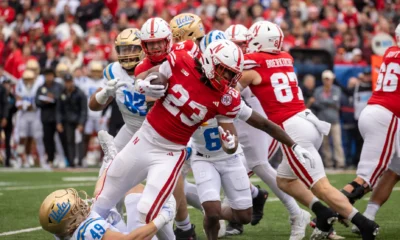

Football
/ 2 months agoHuskers Fight Hard but Fall Short Against UCLA
LINCOLN – The Nebraska Cornhuskers gave it their all on Saturday, with standout efforts...
-
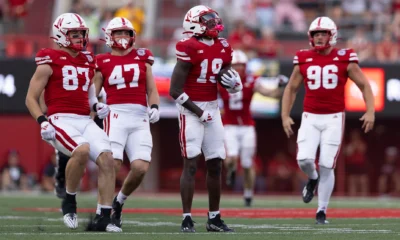

Football
/ 2 months agoGAMEDAY: Nebraska Set to Face Undefeated Indiana in Key Big Ten Showdown
Bloomington, IN – It’s Game Day, Husker Nation! Nebraska (5-1, 2-1 Big Ten) returns...
-


Football
/ 3 months agoBlackshirts Shine as Nebraska Tops Rutgers 14-7 on Homecoming
Lincoln, NE – Nebraska’s Blackshirt defense played a starring role in the Huskers’ 14-7...
By Chris
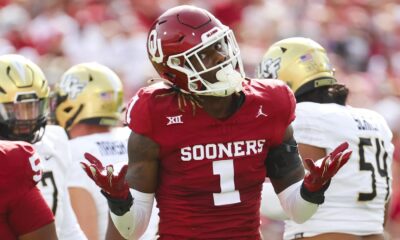

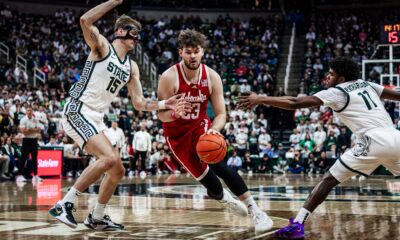



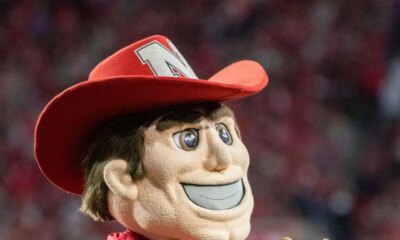

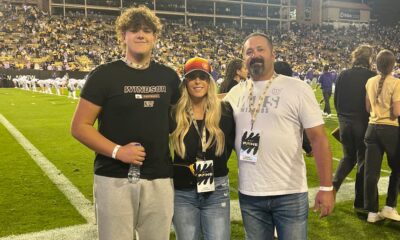






You must be logged in to post a comment Login